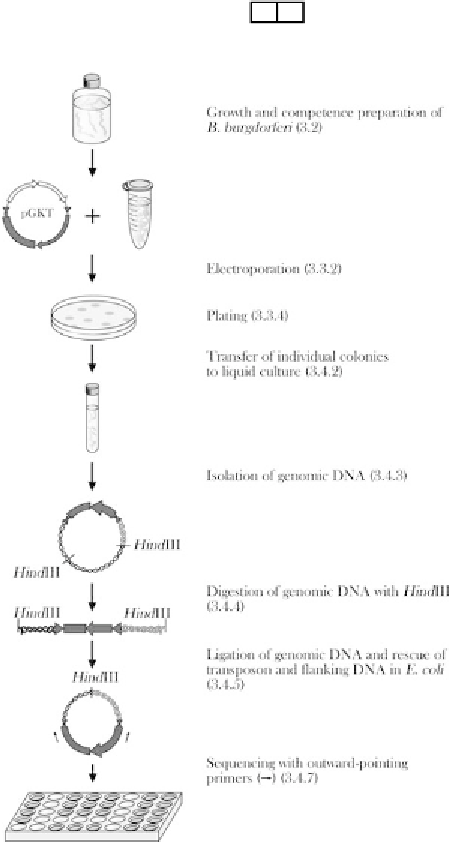Biology Reference
In-Depth Information
Members of the
mariner
family of transposons are particularly useful as
genetic tools in heterologous hosts because they do not require host cofactors to
be functional and because they integrate randomly into the genome, recognizing
a T-A dinucleotide sequence to insert. Recently, hyperactive mutants of the
mariner
element
Himar1
were isolated that possessed an increased frequency
of transposition over the wild-type allele
(10,11)
. These features have allowed
Fig. 2. Strategy for the generation of transposon mutants in
Borrelia burgdorferi
and identification of the transposon insertion site. Numbers in parenthesis refer to
the specific
Subheading
and step of the Methods section in which the procedure is
described.

Search WWH ::

Custom Search